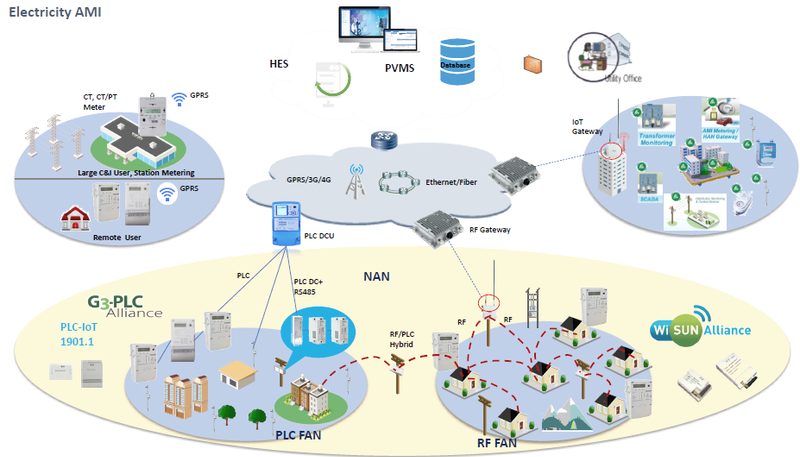AMI Hardware, design, manufacturing and distribution

Municipalities struggling with their Eskom accounts, revenue collection challenges, electricity theft through bridging, cable theft challenges, fraud prevention management challenges, quality of supply data collection and reporting challenges, utility savings management challenges, municipalities who are not large enough for a license who require billing and technical integrity in their distribution reticulation, municipalities who would like to apply for a distribution license on the basis of an AMI acquisition, municipalities who require a STS prepaid vending solution and municipalities looking to quantify service delivery improvement metrics in their jurisdictions by upgrading from AMR to AMI by means of an initial pilot followed by a full rollout, are all direct beneficiaries of the initiative’s value proposition. There are 182 (out of 278) municipalities, including metros that are licensed electricity distributors. They supply 40% of the electricity to 60% of the electricity customers. On average 18% of the electricity that South African municipalities bought from Eskom in the Financial Year 2013 was lost and never reached paying customers. 22 million MWh was lost due to technical and non-technical issues such as theft, representing half of the 2, 511MW of generation capacity, and more than half that of Eskom’s new Kusile power station.
Tshwane, Cape Town and Buffalo City suffered more than R1.1 billion in electricity losses in 2012/13. Tshwane's loss was the highest among these metros, with the municipality experiencing electricity distribution losses of more than R622 million because of theft, tampering and faulty meters. Cape Town's energy losses totaled more than R400 million and the municipality blames this on theft and vandalism, while Buffalo City's stood at just over R85 million. The National Energy Regulator, (NERSA) has set a benchmark of 12% for electricity losses. NERSA has not been able distinguish between technical losses and theft. It has disclosed that losses at six municipalities amount to 40% or more of what they purchase and eighteen municipalities have losses between 30% and 40%. The worst performer is Nqutu municipality in the UMzinyathi District of KwaZulu-Natal, with 63% electricity losses. Among the metros, Johannesburg’s City Power is the only one to exceed the benchmark with 22% electricity losses. If one adds the R1 billion bad debt for electricity sales that municipalities write off every quarter and the outstanding debt older than 90 days that will most probably be written off in future to the electricity losses, more than a fifth (22.7%) of the electricity that municipalities pay for, fail to generate money for them.
Madinda Utilities’ Value Proposition is to assist the municipalities reduce their electricity losses to the benchmark levels of NERSA and the department of Water and Sanitation, through AMI implementation and management. The AMI, a proven cost-optimization technology with a live reference, can be implemented and achieve a municipality’s lowest cost per unit for its consumption and distribution patterns, by the continuous appraisal, auditing and monitoring of a municipality account’s cost per unit through internal and external optimization principles to yield savings, accurate budgeting data, minimized system losses, forecasting, set payment algorithms, as well as, carbon footprint count and management. Madinda Utilities will identify where maintenance, refurbishment and short term strengthening should take place from the live data gathered by the AMI. This will assist the municipalities in their Eskom and water board accounts, and assist in the removal of the negative effect of tariff increase on poor consumers. This will assist in the elimination of electricity theft and fraud, as well as in eliminating leakage of Free Basic Electricity to non-qualifying households not with-standing the cost-effective distribution of free basic electricity to qualifying indigent households.


